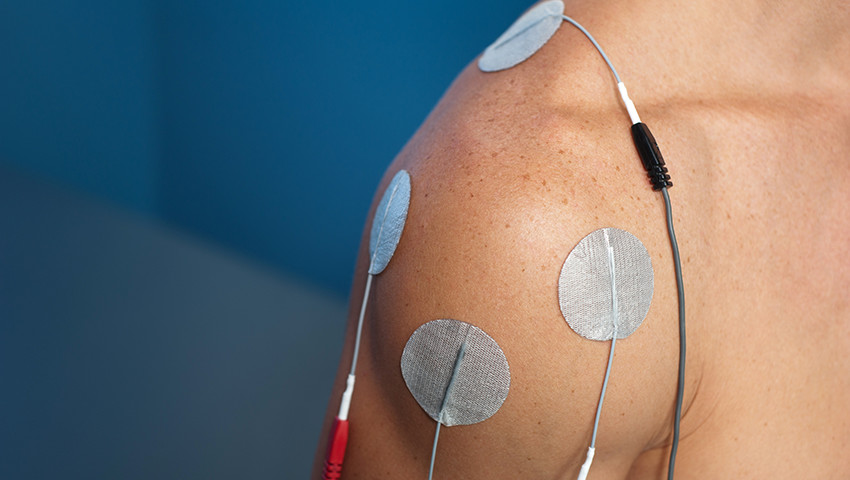Interferential Current Therapy (IFC)
Targeting the pain site, not the entire body
Interferential Current Therapy (IFC) is a noninvasive therapy indicated for the symptomatic relief from, and management of, chronic intractable pain and post-surgical and post-trauma acute pain. It provides a safe and effective alternative to pharmacological approaches to pain control. IFC has minimal side effects and is non-addictive. Adverse reactions associated with electrotherapy may include skin irritation beneath the electrodes.
Advantages of Interferential Current Therapy
- Safe and effective alternative to pain control medications
- Non-addictive and minimal side effects
- Patients can manage their own pain
Mechanism of Interferential Current Therapy
When two medium-frequency circuits of slightly different cycles per second are superimposed, interference is formed which blocks the transmission of pain messages at the spinal cord level. This interferential stimulation is concentrated at the point of intersection, deep in the tissues, between the electrodes.
IFC modulates a high frequency (4000 Hz), versus TENS which typically delivers at 125 Hz. When current is applied to skin, skin resistance decreases as pulse frequency increases. Thus, IFC crosses the skin with greater ease and with less stimulation than with TENS. Interferential current reaches greater depths and over a larger volume of tissue than other forms of electrotherapy. Normally, very deep pain is difficult to reach with traditional modalities. IFC increases circulation as well.

Clinical Application
Interferential current therapy has been used extensively to help manage pain, edema, and inflammation due to soft tissue irritation from trauma or degenerative changes, with less dependence on narcotics. IFC can be used for pain associated with several conditions including:
- Back pain (most common)
- Arthritis
- Strains and sprains
- Neuralgia
- Reflex Sympathetic Dystrophy (RSD)
- Shingles
- Degenerative joint disease
- Interstitial Cystitis


